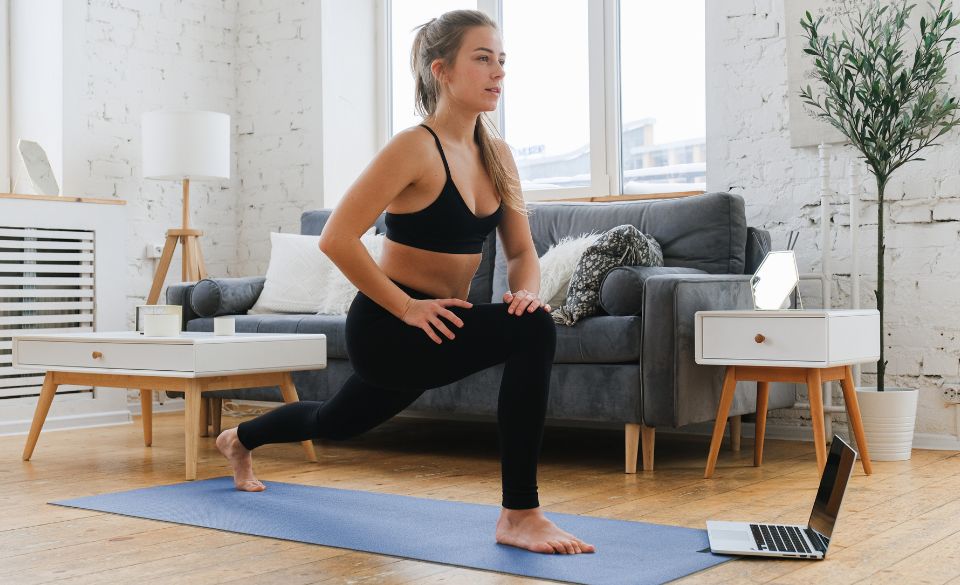
Can Exercise & Weight Training Reduce Cellulite
Page Contents
Cellulite, a common occurrence affecting as many as 80-90% of individuals, primarily women, is a natural part of the human body. Unfortunately, societal conditioning and the prevalence of photo editing have led many to perceive it as a “problem” to be eliminated.
The reality is that cellulite cannot be entirely eradicated through exercise alone, even for those with lean physiques who might still exhibit visible cellulite. Nevertheless, there are effective measures to diminish its appearance, potentially boosting one’s self-confidence.
This article delves into the intricacies of cellulite, offering valuable advice on reducing its visibility. Additionally, it provides lower body exercises aimed at enhancing strength and self-assurance, allowing individuals to embrace their inherent power.
Is it possible for exercise to eliminate cellulite?
While exercise can certainly aid in minimizing the appearance of cellulite, it cannot completely eradicate it. Exercise serves to strengthen the muscles beneath the cellulite, which, in turn, enhances overall well-being. This boost in self-confidence can enable individuals to shift their focus away from cellulite and towards recognizing their inner strength.
Cellulite is the visible presence of subcutaneous fat, which results in a dimpled or “orange-peel” texture, most commonly observed on the buttocks and thighs.
The skin comprises three primary layers:
– Epidermis
– Dermis
– Hypodermis or subcutaneous layer
The hypodermis, the third layer, houses fatty tissue, known as subcutaneous fat, responsible for energy storage, insulation, and protection. It also connects the upper skin layers to muscles and fascia. Directly above the hypodermis is a layer of connective tissue, primarily composed of collagen. In some instances, fat can protrude through these collagen fibers, leading to a dimpled appearance.
It is plausible that losing body fat and increasing muscle mass may contribute to reducing cellulite’s visibility. However, it is important to note that even very lean individuals can still exhibit noticeable cellulite.
Understanding the Factors Contributing to Cellulite
Cellulite is a condition believed to have a multifaceted origin, with numerous contributing factors.
Anatomical and Hormonal Variations
Cellulite predominantly affects women, mainly due to higher estrogen levels and distinct anatomical disparities.
In men, collagen fibers are oriented at a 45-degree angle, creating a crisscross pattern that impedes fat protrusion. In contrast, women possess collagen fibers that run perpendicular to the skin, making fat more visible.
Women with cellulite often have an abundance of fibrous septae, which are thick bands of connective tissue that exert a downward pull on the skin, accentuating cellulite’s appearance.
Higher estrogen levels can exacerbate cellulite. Elevated estrogen levels are linked to fat accumulation in the thighs and hips, and conditions involving androgen deficiency or estrogen therapy may increase cellulite incidence.
Age
While not a primary cause, age may influence cellulite’s development. Aging leads to a weakening and thinning of connective tissue, facilitating fat protrusion through these weakened areas and intensifying the appearance of cellulite.
Cellulite can emerge after puberty, affecting individuals of various age groups.
Genetic Predisposition
Cellulite exhibits a significant genetic component, implying that individuals with close relatives who have or had cellulite are more susceptible to this condition. Genetic factors often render cellulite challenging to eliminate or prevent, underlining the importance of accepting it as a natural aspect of the body.
Body Composition
Research suggests that a higher body fat percentage may exacerbate the visibility of cellulite. Excess body fat can be pushed through fibrous septate (connective tissue), intensifying the prominence of cellulite. Conversely, the development of lean muscle through strength training may reduce the appearance of cellulite, although limited research exists in this area.
It’s important to note that having cellulite does not automatically equate to having excess body fat. Cellulite is primarily influenced by the distribution of connective tissue, meaning it can affect individuals of all body sizes.
Lifestyle Factors
Certain lifestyle choices may impact the manifestation of cellulite, with sedentary living, smoking, and excessive alcohol consumption potentially exacerbating it .
In contrast, an active lifestyle combined with a nutritious, anti-inflammatory diet could ameliorate the appearance of cellulite. Adequate hydration may also provide temporary relief from its visibility.
Nevertheless, limited research exists on the correlation between lifestyle behaviors and cellulite, making it difficult to assert that these habits definitively influence cellulite appearance.
Is Targeting Cellulite Through Exercise Feasible?
Contrary to the claims of many fitness influencers, it’s essential to understand that exercise alone cannot eliminate cellulite. Moreover, the concept of spot-toning, which involves attempting to slim a specific area of the body by concentrating on extra exercises for that region, is a misconception.
In reality, there is no distinct process for “toning” individual muscles. Achieving muscle definition and visibility necessitates reducing body fat, which affects the entire body rather than a specific zone, and increasing muscle mass.
If your objective is to diminish the appearance of cellulite, you may observe modest improvements through the combination of muscle enhancement and body fat reduction. This, however, necessitates a long-term commitment to a holistic lifestyle rather than merely adding a few leg exercises to your daily routine.
It is important to emphasize that cellulite is not something you need to eliminate. Instead, exercise should be regarded as a tool to promote overall health, rather than a means of conforming to ever-changing beauty standards.
Final words – Can Exercise & Weight Training Reduce Cellulite
In conclusion, cellulite, a common occurrence affecting as many as 80-90% of individuals, primarily women, is a natural part of the human body. Unfortunately, societal conditioning and the prevalence of photo editing have led many to perceive it as a “problem” to be eliminated.
The reality is that cellulite cannot be entirely eradicated through exercise alone, even for those with lean physiques who might still exhibit visible cellulite. Nevertheless, there are effective measures to diminish its appearance, potentially boosting one’s self-confidence.
This article delves into the intricacies of cellulite, offering valuable advice on reducing its visibility. Additionally, it provides lower body exercises aimed at enhancing strength and self-assurance, allowing individuals to embrace their inherent power.
It is plausible that losing body fat and increasing muscle mass may contribute to reducing cellulite’s visibility. However, it is important to note that even very lean individuals can still exhibit noticeable cellulite.
Cellulite is a condition believed to have a multifaceted origin, with numerous contributing factors, including anatomical and hormonal variations, age, genetics, body composition, and lifestyle choices. While certain lifestyle habits may improve or worsen the appearance of cellulite, it is essential to understand that cellulite is a natural part of the body that should not be stigmatized or pathologized.
Furthermore, the idea of spot-toning or targeting cellulite through specific exercises is a misconception. Achieving muscle definition and reducing cellulite’s visibility requires a holistic approach that includes reducing body fat and building lean muscle, rather than focusing on one isolated area of the body. Exercise should be embraced as a tool for promoting overall health and well-being, rather than a means of conforming to unrealistic beauty standards.



